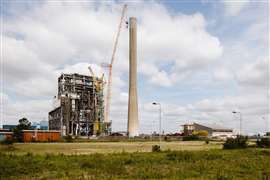Latest technological advances in drilling and foundation
14 June 2022
The first stage in building up is always drilling down. Advanced tech and innovative equipment are driving the drilling and foundations sectors forward to ensure the job is done efficiently and safely. Catrin Jones reports.
The groundwork that takes place before the magic happens is integral to almost every infrastructure project. The resilience and robust nature of a building are heavily reliant on getting the foundations right, but drilling can bring a whole host of challenges.
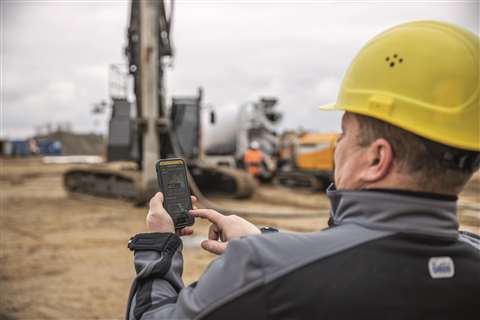 MyJobsite has been specially developed by Liebherr for deep foundation work and makes it possible to automatically record all relevant data concerning the process. (Photo: Liebherr)
MyJobsite has been specially developed by Liebherr for deep foundation work and makes it possible to automatically record all relevant data concerning the process. (Photo: Liebherr)
As autonomy and technology advance throughout the industry, the goal always remains the same – maximum productivity with ease of operation. Potentially lengthy and dangerous work needs to be completed both efficiently and safely.
Using suitable equipment eliminates potentially dangerous situations and mitigates any risk. Lissmac has used this as the central focus of their drill-jet diamond channel core drilling system, including a core drilling machine.
Lissmac’s practice-oriented drill-jet channel core drilling system is said to run without the need for any external energy source. The Lissmac CDM 23 WP core drilling machine has its power plant onboard featuring an easy-to-start two-stroke petrol engine that delivers 2 kW/2.7 HP.
A flanged-on three-speed gearbox fully exploits its torque and always drives the core drill bit at the optimum rotational speed depending on the diameter of the cutting tool.
Operator safety is imperative for such equipment and Lissmac says they have enabled this through an integrated centrifugal clutch on the motor, in combination with the mechanical overload clutch on the three-speed gearbox.
When handling in tight spaces and shafts, the exhaust hose equipped with additional protective heat insulation in the working area avoids the risk of burns. The emergency stop button, centrally located on the control display, stops the machine immediately when there is danger.
Digital drilling
A new prototype production facility being built by a well-known German car manufacturer faced difficulty when the calculated forces were reported as too high for the great weight of the building and unsuitable soil. Liebherr’s Positioning System LIPOS was able to apply digital solutions to correct the different depths of the load-bearing gravel layer.
Robl Spezialtiefbau GmbH was contracted for the foundation work on this project using two Liebherr piling and drilling rigs, types LRB 16 and LRB 18, each equipped with an LV 20 F high-frequency vibrator with a slim design.
“The planned completion time was undercut by one week because both Liebherr piling and drilling rigs, including attachments and accessories, functioned perfectly,” said Martin Robl, CEO of Robl Spezialtiefbau GmbH.
The Liebherr Positioning System LIPOS for deep foundation machines shows the machine operator where exactly the 900 piles are to be placed, says Liebherr.
Previously, contractors would face a huge amount of time surveying and securing the piles, whereas digital innovation is beginning to streamline this process. Now, says Liebherr, the 900 pile positions are transmitted to the Liebherr machine in a digital drilling plan displayed on the monitor in the operator’s cabin.
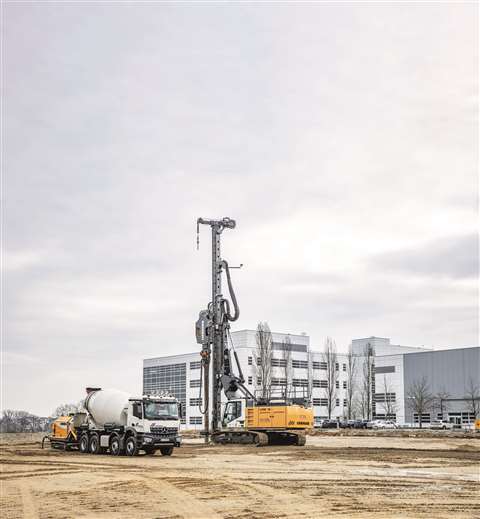 Digitalisation can support difficult infrastructure projects. (Photo: Liebherr)
Digitalisation can support difficult infrastructure projects. (Photo: Liebherr)
Liebherr says that the effective machine technology, supported by digital position data that is accurate to the centimetre, makes it possible for up to 80 vibrated cast-in-place piles to be completed per day by the machine. In this case, the project was completed one week ahead of schedule and the two Liebherr piling, and drilling rigs successfully installed all 900 piles.
Alternative energy for earthworks
The construction industry is moving steadily toward electric and alternative energy sources – and the drilling industry is much the same. Electric drills provide safer and healthier working conditions due to their considerably lower levels of noise and lower levels of heat emitted, leading to a reduced risk of fire.
Power and performance are imperative for completing challenging underground projects in addition to the pressure of sustainable operations. So, is electrification a driving force in making sure both targets are met?
Junttan is helping to ensure a sustainable future with the unveiling of the PMx2e, the world’s first fully battery-powered electric pile driving rig. The rig’s hydraulic system is controlled by a modern electric motor that generates power from a battery pack, which has replaced the counterweight.
The Finland-based company says it worked hard to successfully replicate the efficiency and power of a diesel rig with the new machine. The PMx2e offers the same robust structure and usability as the PMx22, but consumes less energy per pile, reduces noise, and delivers more power and instant torque.
Pasi Poranen, CEO of Junttan, said, “After four years of research and development, we are bringing the future replacement of a diesel engine deep foundation machine to the market. PMx2e will empower our clients by massively reducing their CO2 emissions and environmental footprint.”
Smart drilling technology
Vermeer recently unveiled the newest generation of maxi rig drills with the introduction of the 249,475.8kg D550 horizontal directional drill (HDD).
“This latest generation maxi rig drill delivers more compared to older Vermeer models,” said Clint Recker, trenchless product manager at Vermeer.
“In addition to the D550 drill’s class-leading torque, it can deliver a steady, ultra-slow speed control for working in challenging hard rock, as well as rotation speed for boring in challenging clay conditions. Its smart onboard technology gives the operator and service technicians greater access to information.”
Furthermore, Vermeer has developed and integrated new HDD technology into the Vermeer D550 to allow optimal operation. The drill runs quiet, which helps keep jobsite sound levels down and reduces the need for sound barriers when working in urban areas.
Other companies, such as Epiroc, are also embracing smart technology. An upgrade has now been released for the Epiroc surface drill rigs, SmartROC T35 and T40, adding to the company’s portfolio within construction and quarrying. The adoption of smart technology and enhanced automation is said to enable the models to deliver more sustainable and user-friendly solutions.
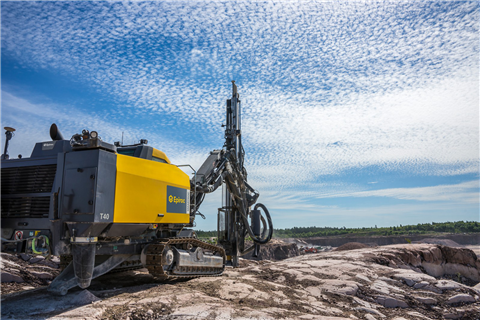 Epiroc SmartROC T40. (Photo: Epiroc)
Epiroc SmartROC T40. (Photo: Epiroc)
The new SmartROC T35 and T40 are equipped with an enhanced engine RPM control, compared with previous models. The increased level of intelligence also means that the updated models are more fuel-efficient – by almost 5%.
Ulf Gyllander, global product manager at Epiroc, said, “The fuel consumption of machines has a significant impact on the environment and the customer – especially with the price of fuel at the moment. We’ve gone even lower on the level of fuel consumption of these models.
“It’s all about the hydraulic system. By having a good setup that uses the right amount of power that is needed for the job, we can control the engine RPM and when it is run on a lower RPM then less fuel is consumed.”
Minimise construction downtime
Epiroc says that both models feature self-diagnostic capabilities. This helps to track down issues quickly and effectively and as a result, downtime is kept to a minimum. Another smart solution is the automated adding of rods when the rig drills down. Once the hole is complete, rods are extracted with significantly reduced input from the operator.
Gyllander added, “On top of all these new features, we also have numerous new options available for this update, such as a new pressure-washer, extra lighting, and Measure While Drilling live – making it possible to log drilling parameters during drilling. It is no understatement to say that these drill rigs are better equipped than ever.
“This product update has many valuable features and options, enabling more uptime and therefore higher productivity. With the operator in focus, we have made sure that these models offer valuable new technology – that is easy to use.”
Everyone is adapting their equipment to meet the needs of the sector and to ensure infrastructure is built smarter and not harder. “Technology is an ongoing path,” says Gyllander. “Every opportunity is taken to make fuel consumption better to reduce our environmental footprint. It’s an ongoing struggle for everyone but we need to do it and it’s just a question of how we do it.”
The new Epiroc models are fitted with a new 12% larger pulley wheel, which is said to reduce wear on the feed cable due to reduced cable-bend. The company hopes that with a larger pulley wheel the feed cable and the wheel will last longer – therefore leading to reduced costs.
Epiroc says this means less downtime for maintenance and higher productivity, compared with its previous models. Uptime is also improved due to better placement for feed sensors, now located in a more protected area with less risk of damage.
Data technologies for drilling
Germany-based Tracto is taking advantage of data capabilities to better provide digital solutions to increase reliability and optimise drilling processes.
Timotheus Hofmeister, CEO of Tracto, said, “Our machines don’t destroy valuable surfaces, they excavate minimal dirt, use only small amounts of resources and natural capital, emit little CO2 and particulate matter, and can sharply reduce build time compared with open construction.
“The worst thing that can happen is for the drilling machine to break down and work on the construction site to come to a standstill,” Hofmeister says. “After all, every hour of downtime costs money.”
Horizontal directional drilling (HDD) requires careful planning and advanced software. Tracto noted that users need to be able to keep an eye on the HDD rigs and their condition around the clock. The company decided to leverage previously hidden potential – the data created directly in the drilling rig during the drilling process – and use it to develop modern, digital services.
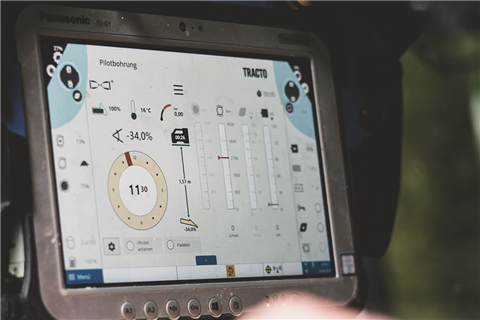 Tracto has taken advantage of big data for more innovation. (Photo: Tracto)
Tracto has taken advantage of big data for more innovation. (Photo: Tracto)
Tracto began working with Microsoft to maximise its drilling equipment data by making the data stored in the machines visible. According to Tracto, sensors now transmit telemetry data directly from the machines to the cloud via the Azure IoT Hub. The data from the fluid-assisted horizontal directional drilling rigs are analysed using apps developed specifically for Tracto machines.
Meinolf Rameil, CTO of Tracto, added, “At any time, we can provide evidence of how the drilling went, whether all guidelines were complied with, and that we didn’t fall short of certain drilling depths.”
3d modelling
The data can also be used to significantly improve the drilling process itself, says Tracto. The Quickplanner3D app can calculate drilling routes as 3D models before drilling. The drilling plan is then sent to the appropriate machine, which then follows it when drilling meaning the drillmaster doesn’t have to make any manual adjustments.
Drilling technology continues to advance therefore improving safety and the way projects are completed. Ease of operation is a top priority for the sector whilst the development of innovative equipment means work can be done on schedule with minimal challenges.
STAY CONNECTED


Receive the information you need when you need it through our world-leading magazines, newsletters and daily briefings.
CONNECT WITH THE TEAM










